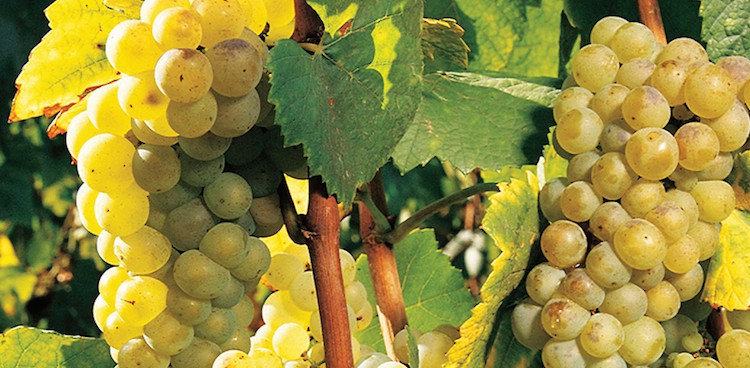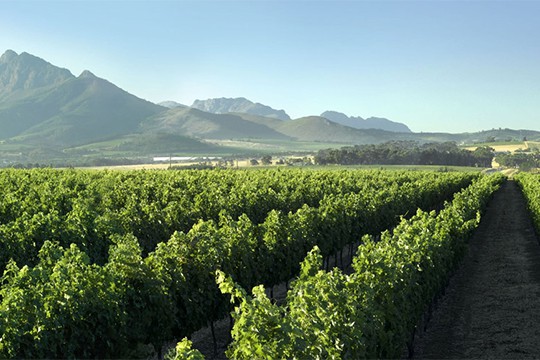
The aha moment came over a bowl of pasta carbonara. Egg, bacon, cheese, pasta: so simple, yet so challenging to find a wine that can put up with that level of richness and respect the dish’s comforting blandness. Not that I cared much on this particular night; it was late and I just wanted to eat.
So I poured a glass of what was open: Champalou Vouvray, a chenin blanc from France, not thinking about it until the combination hit my tongue. It was impossibly good. The wine had the acidity to cut through the richness, but its slight sweetness drew out the salty Parmesan notes.
Would it be this good with just Parmesan? It was, in fact. The briny cheese picked up the sugars in the wine, and the wine didn’t blink in the face of all that condensed milk fat. I broke out a semi-soft washed rind cheese, and the pairing celebrated its slight funk; with Gruyère, it wasn’t perfect, but it wasn’t far off, either.

Chenin blanc and cheese: What took me so long?
Oh, right—because for ages the only chenin blanc we knew in the U.S. was the stuff that filled jugs. And the number of great examples that make it outside California’s borders can still be counted on one hand. It’s these light, innocuous chenins that cheese-and-wine-pairing chart writers have in mind when they fill in “chenin” next to cheeses such as mozzarella, Oaxaca, and “baby” Swiss.
Move beyond these bottlings, however, and the wine begins to get really interesting. With its naturally high acidity, the grape is capable of producing everything from sparklers to syrupy-sweet stickies—which means there’s a type for every cheese. Here’s a taste of what various styles of chenin can do for your cheese plate.
SPARKLING
Chenin’s high acidity makes it a natural varietal for sparkling wines. Most of the examples we see in the U.S. come from France’s Loire Valley, particularly Vouvray; they may be denoted by the term mousseux (sparkling) or, more reassuringly, crémant, which signifies a sparkling wine made in the same labor-intensive way as Champagne. The best offer creamy fruitiness, like that of super-ripe pear, with nuances of flowers, hay, and lime, and tiny bubbles—absolutely the sort of characteristics that would play up the hedonistic side of a triple-crème, like Pierre Robert.
- Marquis de Goulaine Crémant de Loire ($13)
- Domaine de Vaugondy Vouvray Brut ($15)
- Champalou Vouvray Brut ($20)
- Francois Pinon NV Vouvray Brut ($22)
SWEET & SWEETER
When chenin’s powerful acidity meets bodacious sweetness, it melds to form a tension that carries flavor like a note expertly plucked on a violin string. Look for Loire versions labeled moelleux, particularly in Montlouis and Vouvray, or for wines from the sweet-only appellation of Bonnezeaux, Coteaux du Layon and Quarts de Chaume. Washington State also puts out some pressed from frozen grapes. Pour them as you would any sweet white wine: with blues for certain or with hard cheeses that have aged so long they’ve acquired those lovely, crunchy crystals of tangy sweetness.
- Château Soucherie Coteaux du Layon ($23)
- Kiona Red Mountain (Washington) Chenin Blanc Ice Wine ($25)
- Domaine de la Taille aux Loups Montlouis Moelleux ($45)
- Huët Vouvray Moelleux Le Clos de Bourg ($50)
- Château Pierre-Bise Quarts de Chaume ($55)
LIGHT & DRY
You wouldn’t know it from looking at the shelves in our wine shops, but South Africa grows more chenin blanc than any other grape. The country excels at crafting wines at the light, fresh end of the chenin spectrum; the examples that come Stateside, at any rate, tend to be clean, bright, and lively with limey flavor. Most California examples fall at this end of the spectrum, too.
In France, look to the western end of the Central Loire Valley, in Touraine, for light, dry chenins. Vouvray, the region’s most famous appellation, can be so light as to imitate water; others can have piercing acidity and deep flavor that will last for decades. Across the river in Montlouis-sur-Loire, wines tend to be a little less edgy, but all of these share a delicacy lifted by nervy acidity. These are your salad wines, your fresh cheese wines, the sort made to highlight a new goat cheese or even a barrel-aged feta tossed with spring greens.
- MAN Vintners Coastal Region Chenin Blanc ($10)
- Dry Creek Vineyard Clarksburg Chenin Blanc ($12)
- Vinum Cellars Clarksburg CNW Chenin Blanc ($12)
- La Craie Vouvray ($16)
- Catherine & Pierre Breton Vouvray La Dilettante Sec ($24)
RICH & DRY
This is where chenin gets seriously exciting, managing to pull off the near-impossible trick of tasting as rich as drippy, sweet pears, apricots, or even pineapple and honey, and yet leaving the mouth feeling fresh and dry.
It’s also where the grape gets weirdest. Chenin has a certain funk—to me, it smells like sheep; the wool, mostly, but often a bit of the barnyard, too. You might prefer to think of it as soft, ripe cheese. And a soft, ripe cheese tends to draw out that funk even further.
Next to a Münster or other fragrant cheese, this is a beautiful thing. The fruit in the wine works like the fruit on a cheese plate; the hay and the earth echo the animal notes in the cheese. Give these richer styles of chenin a few years in the cellar and they’ll add nutty notes to the mix—completing your cheese plate.
To find these styles, head east of Touraine, in Saumur and Anjou (where you’ll find the famed subappellation of Savennières). The climate is milder, being closer to the moderating influence of the Atlantic, and so the grapes grow riper. Or head up to Jasnières, which is technically in Touraine but so far north of the river it really qualifies as its own world; the few examples from this region that arrive in the States tend to be on the richer side.
Or look for dry styles from appellations known more for sweet wines (see below), as some of these producers turn very ripe grapes into powerful dry wines.
- Pascal Janvier Jasnières ($18)
- Jo Pithon Anjou Blanc Les Bergères ($26)
- Domaine des Baumard Savennières Clos du Papillon ($30)
- Domaine de Bellivière Jasnières Les Rosiers ($32)
- François Chidaine Montlouis-sur-Loire Clos du Breuil ($32)





